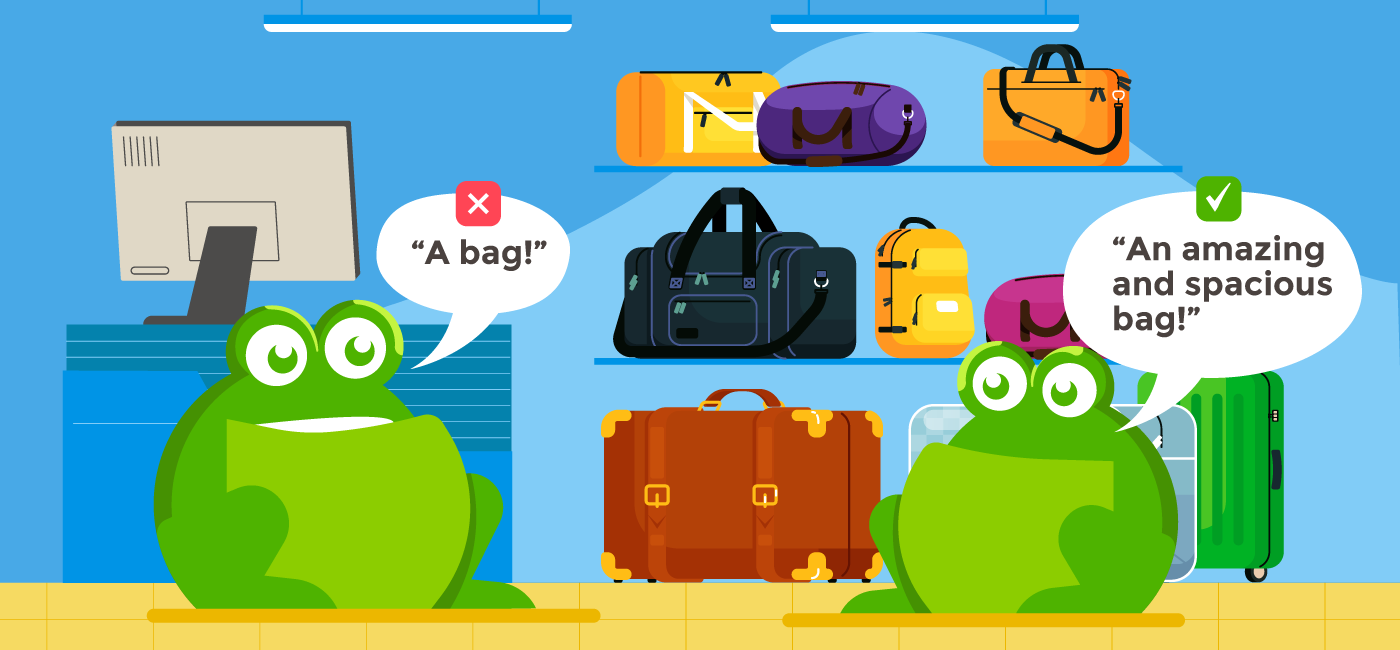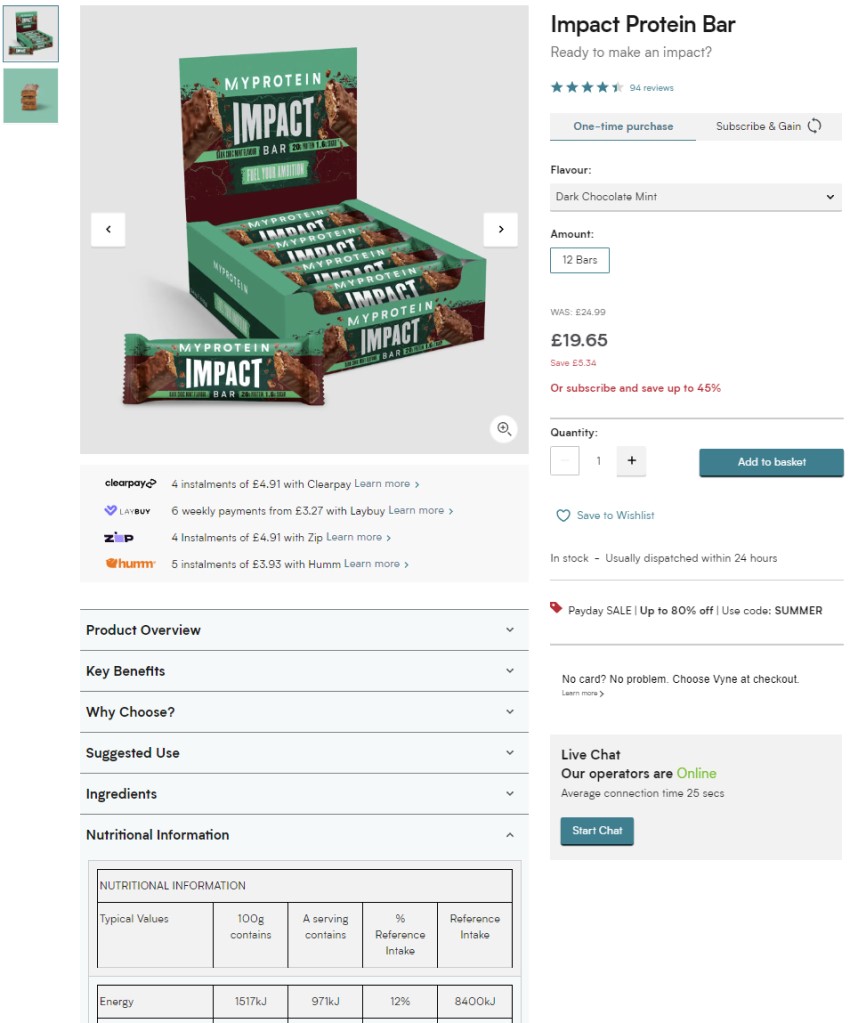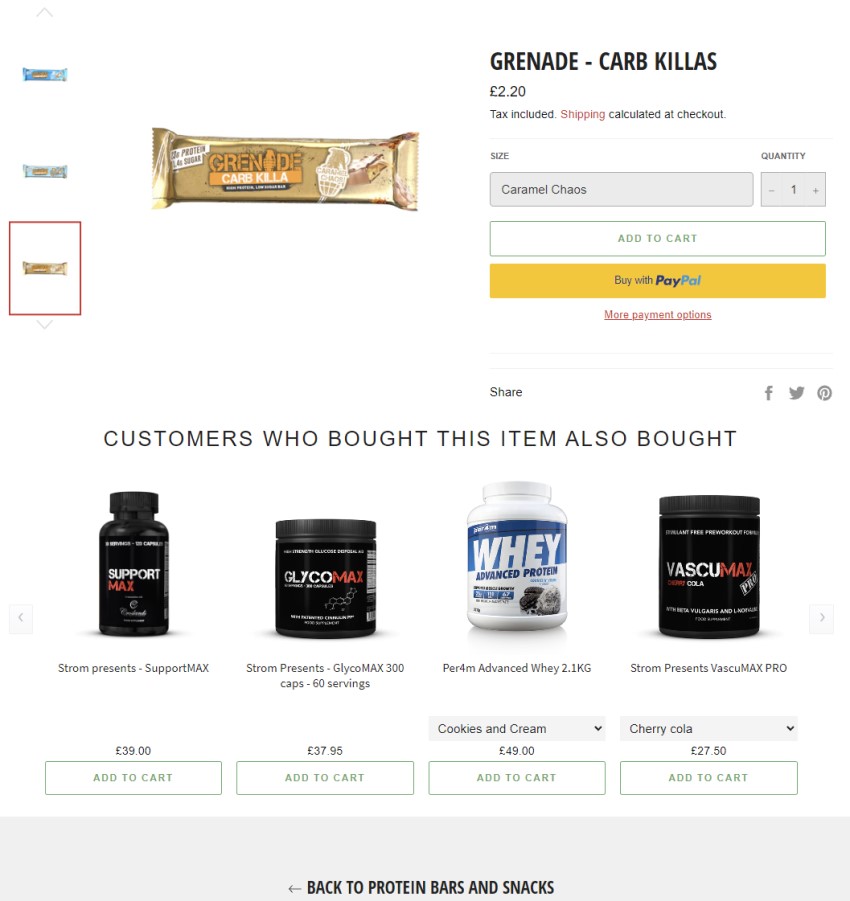A shopper enters a store. This isn’t a joke, don’t worry.
They want a vacuum cleaner, so they pick up the display model. It’s light. They grip the handle. It’s comfortable. They check the size and capacity of the bin and give it a test spin across the shop floor.
“Yep, it’ll fit in the cupboard”.
They buy it.
Another shopper lands on an ecommerce website to buy the same vacuum. How do they achieve the in-store experience?
Copy. And images. But mostly copy. On-site copy needs to give shoppers everything they need to make a confident purchase.
Which challenges does the product solve? How big and heavy is it? What are the key features?
Ecommerce sites need copy that sells.
Easy to Read
Online shoppers don’t have time to wade through paragraphs of copy. They want to find out what makes the product right for them. And quickly.
So, keep it simple. Call out the key benefits of the product. Create scenarios and explain how the product solves common challenges. Does it save shoppers time on daily chores? Maybe it’s made with a more comfortable material than alternative products.
Aim to convert them within one minute. This means short sentences, bold selling points and no long paragraphs of text.
But don’t take my word for it. Google’s John Mueller recently confirmed that “fluff content” can make it “hard for search engines to figure out what you’re trying to say”.
If you want your products to rank on search engines – and customers to find them – keep it snappy and focus on the USPs.
Formatting
When it comes to product copy, formatting is as important as content.
Even impeccable copy gets lost in chunky paragraphs at the bottom of pages and shoppers won’t hesitate to jump to a competitor page if they can’t find what they’re looking for.
So, how should you format product copy?
Keep it natural. This means letting the information dictate its presentation. Break copy into sections that make sense, for example:
- Key features – the main product benefits at the top of the page
- Body copy – the main copy section, broken into small, scannable sentences creating user scenarios
- Product spec – the technical information, like dimensions, weight and accessories, possibly in a digestible table
- User info – which may include FAQs, reviews and more
Not every category of product will need the same sections, so the key is choosing those that make sense for the page and allow the user to easily find what they’re after.
Imagine you’re shopping for the product. What information would you like to know? The price? The material? The size? Why it’s better than alternative products?
Answer these questions and group them into natural sections.
Also, remember to leave plenty of white space on the page and top-load your content. Studies show online readers scan copy in an ‘F’ pattern, so the important stuff needs to be at the beginning of each sentence.
This means keeping copy active with short, snappy sentences filled with calls to action, like:
“Browse our range of accessories”
“Choose the perfect colour for your living room”
This drives action compared with:
“We have a range of colours available so there is a choice for every living room”
Solve Customer Problems

Why do people buy things? To solve their problems. Whether it’s a serious dilemma like how to clean their kitchen or fix their car, or a personal conundrum like ‘what do I wear this weekend?’.
Copy should provide the solutions. Tell short stories with your product copy to help the shopper picture how the product improves their life. For example:
“Save time on household cleaning with our new vacuum”
“Kit out your summer wardrobe with our floral dresses”
Copy should focus on solutions, not attributes. For example:
“Carry all your books, stationery and gadgets with this backpack”
Rather than:
“Large bag”
Every word is valuable. Don’t waste copy on empty adjectives like ‘good’, ‘nice’ or ‘excellent’. Instead, use each word to explain why the product is all these things.
Use tools like Answer the Public for extra inspiration – to find out which questions people are searching around your product. For example, searching ‘handbag’ may give you inspiration for your copy by revealing searches like ‘best summer handbags’ or ‘best material for handbag’.
Rank on Search Engines
Return customers and fans of your brand know exactly where to find your products. But what about those who haven’t shopped the brand or website before?
Product and category pages need to rank well on search engines for shoppers to find them. This means they need to provide value for the reader and naturally target keywords.
Keywords
Product pages are likely to lean heavily on a single target keyword, like ‘tennis ball’ or ‘chocolate bar’. These should be naturally included throughout the page, where relevant, without keyword stuffing.
While product copy is unlikely to be the most optimal place to target all informational searches – like ‘which is the best tennis ball’ or ‘difference between tennis balls’ – it’s perfect for targeting transactional queries. You can always create separate guides targeting these informational terms and include links to your product page in the call to action.
Transactional queries often include long-tail keywords that show the user is ready to convert, like ‘where to buy tennis balls London’ or ‘cheapest tennis balls for sale’. Remember, these long-tail terms can have low search volumes, but their intent means they are just as valuable, so don’t get hung up on numbers.
Consider how you can include as many of these unique and relevant key terms in your product copy. This may include simply working them naturally into body copy, using them as content headings or including an FAQ section. But remember, they must flow naturally in full prose and not be stuffed into descriptions, as this will be flagged as spam.
E-A-T
Another search engine must-have is expertise, authority and trust (E-A-T). Search engines – and users – want to know the product is high quality and manufactured and sold by industry experts, so they know where their money is going.
There are plenty of ways to demonstrate E-A-T on product pages, including adding user-generated content to show products in action. But we can also do it through copy.
Think about the information that gives shoppers confidence to part with their money. This may include a detailed product spec table that features dimensions, materials and more. Similarly, leaning on experts adds authority to product descriptions, for example, are your tennis balls ‘used by professional athletes’?
Additional information that reassures shoppers may include ‘how to care for your product’ copy, expert quotes and links to further resources or guides that help shoppers make up their minds when browsing products.
Calls to Action
The call to action on product pages is obvious… buy the product. But that doesn’t mean they’re easy to write.
Consider conversion button copy and how it reflects the product and the way users typically shop. If they typically buy multiple, smaller value items, could ‘add to basket’ drive action over the traditional ‘buy now’? Similarly, could ‘fast checkout’ be more tempting for impatient shoppers?
If the product is a service or experience, reflect this in the copy, for example ‘book now’.
Calls to action can be used to upsell other products, too. Think about compatible products and internally link to them in the copy. This might look something like:
“Carry our tennis balls effortlessly from home to court with our portable cases, designed to hold up to six balls”.
For Your Inspiration
Let’s look at an example of a product page that brings this all together.
MyProtein nails product copy by understanding its audience and what they’re after. And it breaks its information down into neat, natural sections and keeps the technical stuff concise and scannable.
Here’s an example of product copy for one of MyProtein’s protein bars:

The main product overview covers the key points – the product’s taste and protein content – while the key benefits are scannable and digestible.
MyProtein also includes some common questions about the product with concise answers, as well as covering all the information users need – like when to eat the product and its ingredient profile and nutritional content – in collapsible boxes, so they can easily find what they’re after.
Now, let’s compare this to a competing protein bar page:

Consider everything an experienced athlete or first-time buyer would want to know when buying a protein bar. This may include the total protein content per serving, wider nutritional information and ingredient profiles and the benefits of supplementing protein in bar form.
Would this page be useful or likely to drive action among either audience? There’s nothing to set this protein bar apart from any other or convince users they need the product. Compared with the MyProtein copy, the user is completely in the dark.
Which bar would you rather buy?
Tying It All Together
All our top tips for product copy have something in common – user experience. Each element of your copy should be targeted to the reader.
This means considering how they read information, which questions they’re asking and what their challenges and pain points are.
Next time a product goes live on your site, follow our checklist for effective online sales copy:
- Keep copy short, snappy and digestible – don’t write for the sake of words
- Imagine you’re the buyer – what information and questions would you want covered?
- Let the content dictate the format – no square pegs in round holes
- Solve problems rather than talking about product features
- Consider keywords and trust signals to rank on search engines
- Keep CTAs relevant to the product and consumer
For more insights on how to create killer product copy or to transform your product pages today, enquire about Screaming Frog Digital Copywriting service.

Leave a Reply